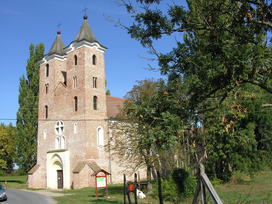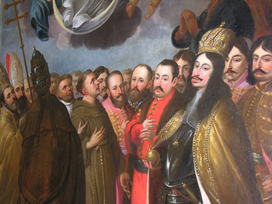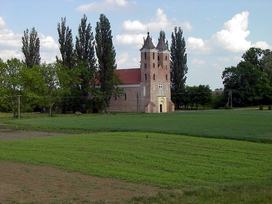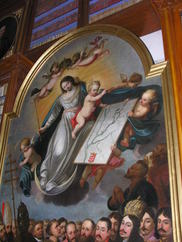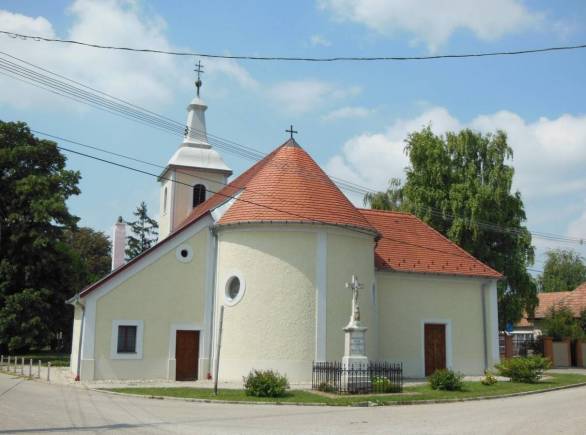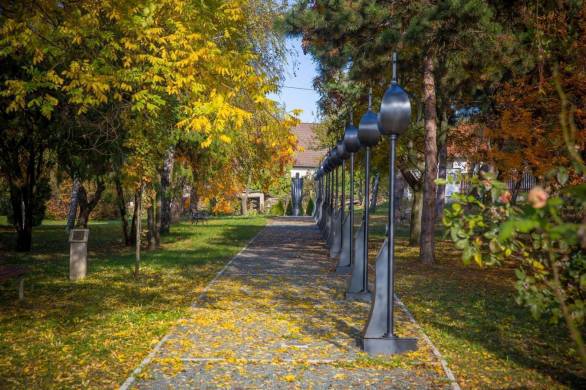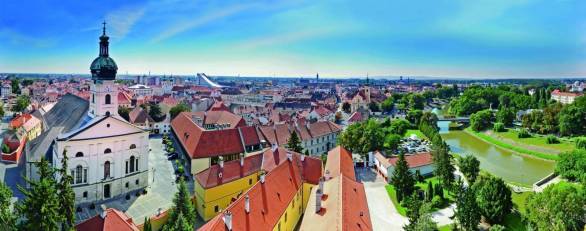St James the Apostle Church
(near Árpás) The Premonstratensian church founded by the Móric reeve was built in the first half of the 13th century and is a rare example of brick architecture in the Romanesque style. The Baroque altars, the baptismal font and the pulpit were added in the 17th and 18th centuries.
The original altarpiece, entitled “Patrona Hungariae and the Majesty of Hungary” has been displayed in Győr since 2005. In the painting, created in 1666-1667, Mary draws the map of Hungary under her cloak with a protective gesture. Hungarian leaders threatened by the Turks kneel beneath the cloaked Madonna beside the Pope and Emperor Lipót. These include the Palatine Wesselényi, Seneschal Nádasdy, Ban of Croatia Péter Zrínyi, Archbishop of Esztergom György Szelepcsényi and Bishop of Győr György Széchenyi. The dignitaries are seeking refuge together under Mary’s protection. The picture, which according to some experts, was painted by an apprentice of Rubens, advocates cooperation. However, instead of this, the Wesselényi conspiracy occurred, followed by its retribution (the execution of Zrínyi, Frangepan and Násdasdy) in 1671.
A painting depicting Saint James is displayed on the main altar instead of the picture, which is kept in Győr.
The church stands at the edge of the village of Mórichida, although it is mentioned in the more modern literature as a monument belonging to Árpás.
A „Patrona Hungariae és Magyarország főméltóságai” című eredeti főoltárképet 2005 óta Győrben látható. Az 1666-1667-ben készült képen Mária védő gesztussal köpenye alá vonja Magyarország térképét. A köpenyes Madonna alatt - a pápa és Lipót császár mellett - ott térdelnek a töröktől fenyegetett haza vezetői: többek között Wesselényi nádor, Nádasdy országbíró, Zrínyi Péter horvát bán, Szelepcsényi György esztergomi érsek és Széchenyi György győri püspök. A főméltóságok Mária oltalma alatt, együtt keresnek menedéket. Az egyes szakértők szerint egy Rubens-tanítvány festette alkotással hirdetett összefogás helyett a Wesselényi-féle összeesküvés, majd 1671-ben a megtorlás (Zrínyi, Frangepán és Nádasdy kivégzése következett.
A Győrben őrzött kép helyett Szent Jakabot ábrázoló festmény látható a főoltáron. A templom Mórichida község határában áll, bár a szakirodalom – a közelebbi – Árpás műemlékeként említi.
